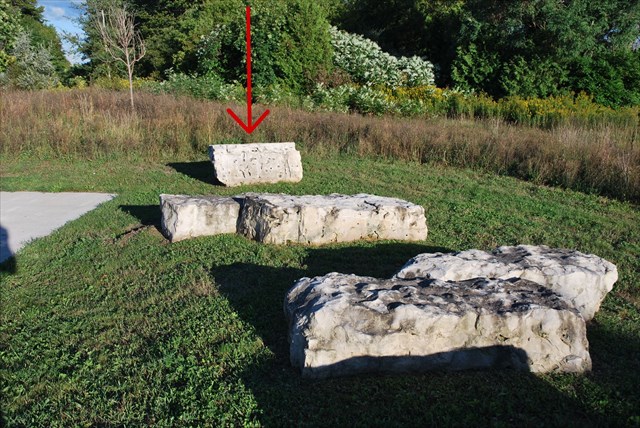Located just off the parking lot at Huron Natural area are 20 or so large blocks next to the sidewalk. The posted coordinates will take you to the last rock in the row (See picture below). Upon examination of this last block you will see many "holes". Many of these holes are lined with crystals. The holes containing crystals are called Geodes. Your lesson today is to inspect these Geodes and then answer a few questions via my profile page.

Let the lesson begin and remember, Geology rocks!


The classroom
Lesson 1- What is a Geode?????
Simply, a Geode is a hollow within a rock which contains tightly-packed crystals. A Geode begins as a hollow within a forming rock or an existing rock. Over time, mineral rich water penetrates the rock layers and reaches the hollow which begins the crystal formation. Millions of years pass while this in and out flow of water gradually and VERY slowly builds crystals inside the empty space. It takes about 240 million years to form a geode.
Lesson 2 - How are the hollows formed?????
A hollow forms within rock in mostly two ways.
1. During formation of hot volcanic Igneous rock, bubbles form when air gets trapped and expands within the rock layers. Within volcanic rock, Geodes are found mostly in basaltic lavas and are usually round in shape.
2. The dissolution of sedimentary rocks which leaves hollows. Within sedimentary rocks, Geodes are found mostly in limestones and are irregular in shape following the weaknesses and faults within the rock. Cracks can often be seen in these rocks which are the means of water penetration.
Lesson 3 - What crystals form in a Geode?????
Most geodes have interiors made of one of two minerals:
1. Quartz - Quartz crystals in Geodes form as a lattice with pyramid tips resembling hexagonal spikes that are attached to one another at the base. Pure Quartz is colourless and transparent but can also come in many colours like citrine, rose, amethyst, smoky, milky, and others and is dependant upon trace elements present.
2. Calcite - Calcite crystals in Geodes form as small individual triangular prism shapes resembling small "teeth". Calcite is a common constituent of sedimentary rocks, limestone in particular. Calcite is transparent to opaque and may show phosphorescence or fluorescence.
The Test
Question 1: What type of rock are these Geodes formed in, Igneous or Sedimentary?
Question 2: Explain how the Geodes were likely formed in this particular rock.
Question 3: What mineral are the crystals within these Geodes? Get a close look, look at the size and shape of the crystals.
Question 4: If this rock was cut into smaller sizes would you expect to see more Geodes inside? Explain.
Question 5: Lastly, count the number of individual Geodes visible on this individual rock from the top and all four sides and let me know what range the number falls in --> 1 to 10 geodes, 11 to 30 geodes, or greater than 30 geodes?
You may log the EC right away but please follow with the answers soon afterwards.

| I am a proud |
 |